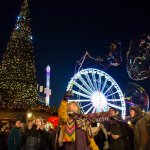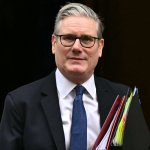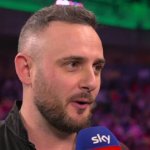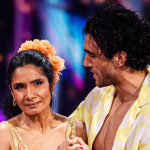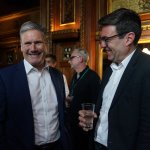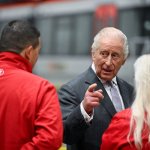Charles “Chuck” Yeager, who has died aged 97, epitomised the movie test pilot of the 1940s and 1950s. A fighter pilot hero of the second world war and later Korea, he was dashing, loyal and supremely skilled. In a life that was pure Hollywood, he named his various fighter aircraft “Glamorous Glenn” after his then fiancee, later wife, Glennis Dickhouse.
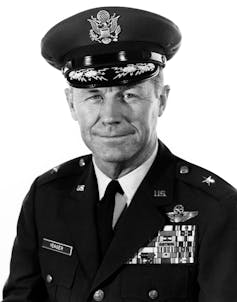
United States Air Force
Parts of his life were featured in the Oscar-winning movie The Right Stuff, in which he even took a cameo role, playing a bar drunk in the famous Happy Bottom Riding Club – a ranch hotel run by another famous pilot, Florence “Pancho” Barnes. He was – along with his friend Bob Hoover – one of the last of that generation of larger-than-life test pilots, usually former fighter pilots, who traded on their bravery and skill, rather than perhaps their scientific knowledge and teamwork.
It was a risky job, and many died. British test pilot Geoffrey de Havilland Jr died when testing his father’s company’s tailless DH 108 “Swallow” in September 1946, after it went out of control and broke up over the Thames Estuary. Valentine Baker died in 1942 testing his company’s MB3 aircraft, leading his business partner, Sir James Martin, to redirect the company to making ejection seats.
Others survived through luck and skill. In Nazi Germany, Hanna Reitsch had a cockpit fitted and test-flew the jet-powered V1 flying bomb, flew an early prototype helicopter inside the 1936 Olympic stadium, and nearly lost her life crash-landing a rocket-powered Messerchmitt 163 “Komet”.
But the next generation of test pilots were different: almost always university graduates, they worked in increasingly large and complex teams, generally alongside a much less well known but equally important flight test engineer, with many moving between these two pivotal roles.
The first of these were typified by two contemporaries. There was American Neil Armstrong, who became universally known as the first man to walk on the Moon. Meanwhile, Briton Eric Brown was the first pilot to take off and land from a carrier in a jet aircraft, conducted 2,407 aircraft carrier landings and flew 487 types of aeroplane – more than any other pilot to date.
One of the post-war greats of the new generation was John Farley. An engineering apprentice turned fighter pilot and later test pilot, he led much of the test flying of the UK’s successful Hawk and Harrier aircraft, and performed flying displays at Farnborough which are still legendary.
Many others are relatively anonymous. Few outside of the industry have heard of Canadian test pilot Billie Flynn but he has test flown and often displayed almost every major fighter of the last 30 years.
What do test pilots do?
First and foremost these men and women are pilots, of course, capable of flying new, modified and often not yet fully understood aircraft. They must also be research engineers because while flying that aeroplane (or helicopter, airship or spacecraft) they must be able to conduct experiments with it.
This means flying precise conditions and taking measurements and observations of everything from speed and altitude to the behaviour of complex internal systems. They might be doing that on their own, or in conjunction with a crew, both on board and on the ground with instruments connected to the aircraft by telemetry.
When Chuck Yeager flew the Bell X-1 in 1947, the whole programme was owned by the engineers. The test pilot would be brought in very late on in the programme when the aircraft was nearly ready to fly. Today, the role is very different, with test pilots often involved in planning flights from the early stage, influencing cockpit and procedure design, and testing prototypes in flight simulators long before a physical aircraft takes to the skies.
That might sound as if they could go years without actually flying, but test pilots will work across multiple programmes, some totally new, some more mature. This is why test pilots must maintain the expertise required to understand and pilot not one but many aircraft.
Yeager and his contemporaries would have been very familiar with that. Then, as now, most pilots qualified on very few types of aircraft. But a test pilot needs a wide range of experience to be able to provide their skills to different research programmes, and to offer insights from comparison between them.
How does somebody become a test pilot today? Not starting as a fighter pilot, but typically as an aerospace, electronic or mechanical engineer. Those who will become the most senior test pilots are then likely to join one of the military flying services, commanding several aircraft types and rated as highly skilled fliers. They are then eligible to apply for a place at one of the world’s eight test pilot schools, for which they’ll need their government’s generous funding – fees for the one-year course are at least US$1 million (£750,000).
Here they learn the fundamental skills and theory of test flying on a dozen or more aircraft types and, after graduating, go to work at a national military flight test centre. The companion profession is the flight test engineer, who may go on to find other, usually civilian, routes to learn to fly.
Sometimes they will progress to become test pilots themselves, typically taking on roles that are more scientifically complex but that don’t necessarily require the intense flying skill of the ex-military pilot. Subsequently, they may stay in that role, progress to senior roles in aerospace, or some become astronauts, such as British helicopter test pilot Major Tim Peake.
So the role of test pilot has changed since Yeager and colleagues were breaking records in the 1940s. Yet it has also stayed the same: every new or modified aircraft or spacecraft will require test pilots to first take to the skies, and sometimes take considerable risks, so that flight crews and their passengers never need to.
![]()
Guy Gratton does not work for, consult, own shares in or receive funding from any company or organisation that would benefit from this article, and has disclosed no relevant affiliations beyond their academic appointment.

